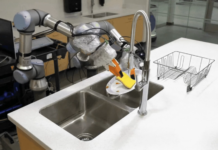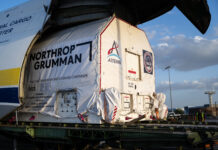The Unsung Heroes of Space Launches: NASA’s Pad Rescue Team at Kennedy Space Center
In the intricate and high-stakes world of space launches, safety is paramount. While much attention is given to the astronauts and the spacecraft, there is a lesser-known yet equally critical team always on standby: NASA’s Pad Rescue team at Kennedy Space Center in Florida. This specialized unit is trained to swiftly rescue personnel from the launch pad in case of an emergency during the countdown. This team has been an integral part of NASA’s operations since the Apollo Program and continues to support modern crewed missions.
The Role of the Pad Rescue Team
The Pad Rescue team is composed of approximately 25 highly trained firefighters and fire officers. For each mission, around 10 pad rescuers are assigned. Their primary responsibility is to ensure the safety of personnel involved in launches from Launch Complex 39A and B, as well as Space Launch Complex 40 at Cape Canaveral Space Force Station.
These professionals are stationed in Mine-Resistant Ambush Protected vehicles, commonly known as MRAPs. These robust vehicles are designed to protect their occupants from various hazards, making them ideal for emergency situations at the launch pad. In the event of an emergency, the Pad Rescue team splits into two groups: one ascends the launch tower to assist personnel, while the other remains at the perimeter to guide individuals through emergency escape or egress systems. Once everyone is safely on the ground and inside the MRAPs, the team drives them to designated triage sites at Kennedy Space Center.
Training and Preparedness
The Pad Rescue team supports a diverse range of launches, including NASA’s Artemis missions, the Commercial Crew Program, and private commercial crew launches. This diversity necessitates extensive training. The team must be familiar with the nuances of different launch pads, emergency egress systems, spacecraft, and even the spacesuits worn by astronauts.
"The hatch itself can be very complex," explains Dylan Reid, Pad Rescue Program Manager. "The seats are different. The suits are completely different and the connections on the suits are different. As we expand Pad Rescue to support different programs, our teams are absorbing all of these highly technical and different needs."
During the Artemis I launch countdown, when the launch team sent in the red crew to fix a hydrogen leak, the Pad Rescue team was on standby to assist if anything went wrong. As preparations for Artemis II, the first crewed Artemis mission, continue, the team is learning about the new additions at Launch Complex 39B that come with having astronauts onboard.
Real-World Training Scenarios
Before the launch of Artemis II, the Pad Rescue team, along with other teams like the Exploration Ground Systems (EGS) Program responsible for launching Artemis missions, and the closeout crew who help astronauts get inside the Orion spacecraft, engage in thorough training for all kinds of emergency procedures that might occur during the countdown.
Recent training exercises have included practicing emergency egress scenarios, such as aiding the closeout crew and a simulated flight crew off the launch tower after a simulated hydrogen leak during a countdown. This hands-on training ensures that the Pad Rescue team is prepared for any eventuality.
The Importance of the Pad Rescue Team
The Pad Rescue team is often likened to "spaceflight knights in shining armor." Instead of saving crew members from a mythical dragon, they are prepared to rescue them from a fully loaded, skyscraper-sized rocket getting ready to lift off. This comparison highlights the critical and heroic nature of their role in ensuring the safety of all personnel involved in space launches.
Christopher Young, NASA Kennedy Fire Protection Chief and Pad Rescue Program Operational Lead, underscores the importance of this team. "These professionals are trained to handle some of the most dangerous scenarios imaginable. Their presence is a crucial part of our comprehensive safety protocol."
Looking Ahead: Artemis II and Beyond
Artemis II is a significant milestone in NASA’s efforts to establish a long-term presence on the lunar surface for scientific research and exploration. The mission will send four astronauts—Commander Reid Wiseman, Pilot Victor Glover, and Mission Specialists Christina Koch and Jeremy Hansen from the Canadian Space Agency—on a 10-day journey around the Moon. This mission will test NASA’s foundational human deep space exploration capabilities, including the Space Launch System (SLS) rocket and the Orion spacecraft, with astronauts onboard for the first time.
The Pad Rescue team’s role in this mission cannot be overstated. Their expertise and readiness ensure that all crew members and ground personnel can focus on the mission objectives, knowing that a highly capable rescue team is prepared for any emergency.
Conclusion
In the world of space exploration, where every second counts, the Pad Rescue team at Kennedy Space Center stands as a testament to NASA’s commitment to safety and preparedness. Their extensive training, quick response capabilities, and dedication to protecting lives make them an indispensable part of the space launch ecosystem.
As we look forward to the ambitious goals of the Artemis program and beyond, the Pad Rescue team will continue to play a vital role in ensuring that every mission is conducted safely and successfully. Their work behind the scenes helps pave the way for groundbreaking achievements in human space exploration.
For more Information, Refer to this article.


































